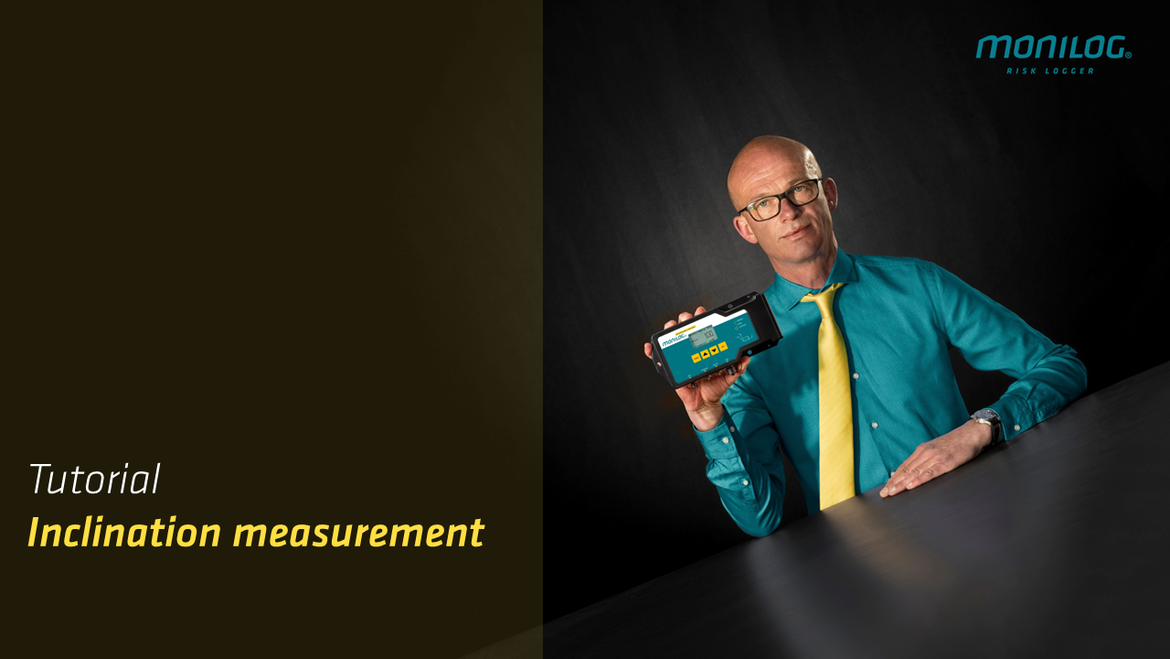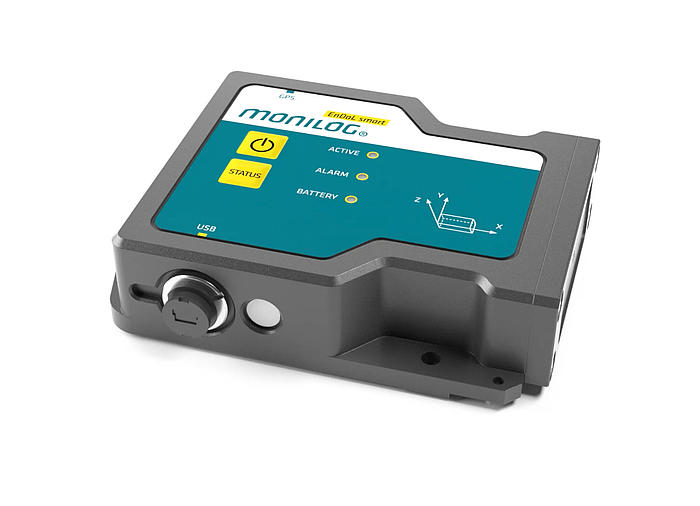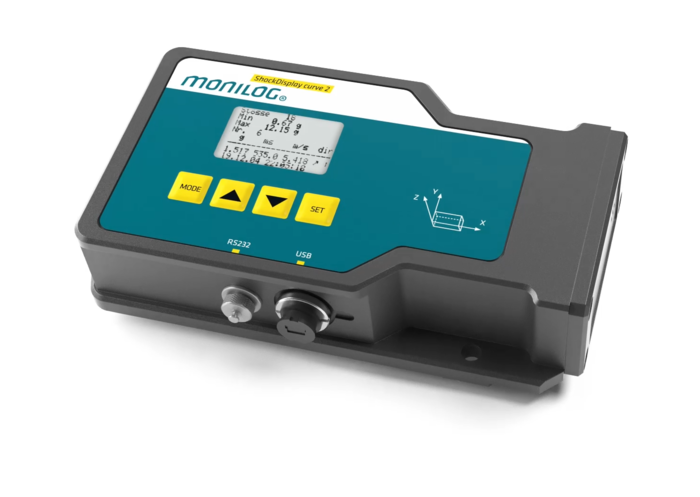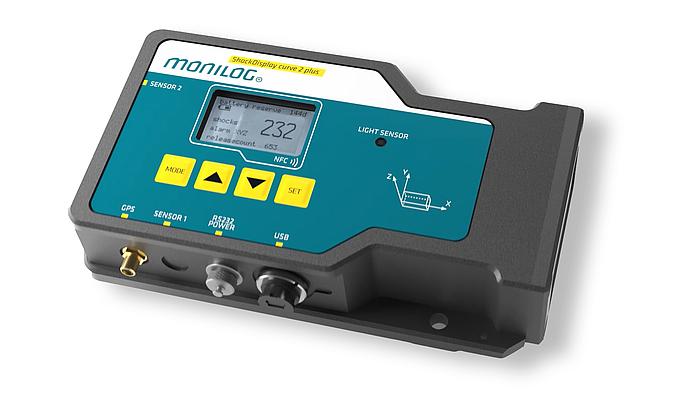The angles of position to describe an orientation in three-dimensional space
The inclination of the MONILOG® RISK LOGGERs is determined on the basis of the Earth’s acceleration / gravity and is first measured as acceleration in [g]. Thereafter, the conversion is made into an angle deviation from the resting position. An inclination sensor determines the resting position in relation to the earth’s axis once when the data logger is switched on. All inclination values determined in this way are a deviation from this resting position. The designations of the angles are based on the ENU reference system (“Right-Hand-Rule”, see also: Wikipedia: Aircraft principal axes).
Calculation of angles based on acceleration values in [g]:
• Rotation around x-axis: Roll angle Φ = arctan (y/z)
• Rotation around y-axis: Nick angle Θ = arctane (z/x)
• Rotation around z-axis: yaw angle Ψ = arctan (x/y)
Two methods of recording inclination values
The static inclination is measured in configured time periods, e.g. every 10 minutes. At these times, the data logger records the acceleration including the acceleration of the earth in all three spatial axes and calculates the inclination angles in relation to the body edges of the device. The course of the inclination is available as a table and as a graph over the operating time of the device. Since it is a time-synchronous measurement, these data are called “synchronous measurements.”
The data logger registers an inclination event immediately when the configured alarm threshold of an inclination angle in relation to the resting position is exceeded. Such an inclination event is characterised by an exact moment in time, three inclination angles, acceleration values of the three spatial axes of the device and, if available, the GPS position.
If you have activated the recording of inclination curves on the data logger, the curve is also recorded at that time. In reality, inclination events often overlap with acceleration events. The graphical representation in the software allows you to follow the inclination process exactly. You can recognize whether a “gentle tilt”, a “vibration” or a “shock process” triggered the inclination event.
The MONILOG® data logger EnDaL smart stores 200,000 synchronous data records and up to 30,000 inclination events. For the first 640 inclination events, it records the complete curve with a duration of 6.5 s at a sampling rate of 12.5 Hz. Other devices may differ in the parameters.
After transporting our sensitive medical devices to the customer, it helps us to know that there were no tilt events. We save time-consuming quality controls of fine-tuned components, which makes the data loggers pay for themselves instantly.

Fitting products
EnDaLsmart
Compact logger, especially suitable for monitoring large transports. With an integrated GPS receiver and inclination sensor. Also approved for air freight.

ShockDisplaycurve 2
Shock data logger for storing the 500 largest shock events and inclination values. Programmable via function keys and menu or software.

ShockDisplaycurve 2 plus
Transport data logger with highly sensitive sensors for measuring different risk factors. Standard-compliant data recording. Immediate data availability via free app.
